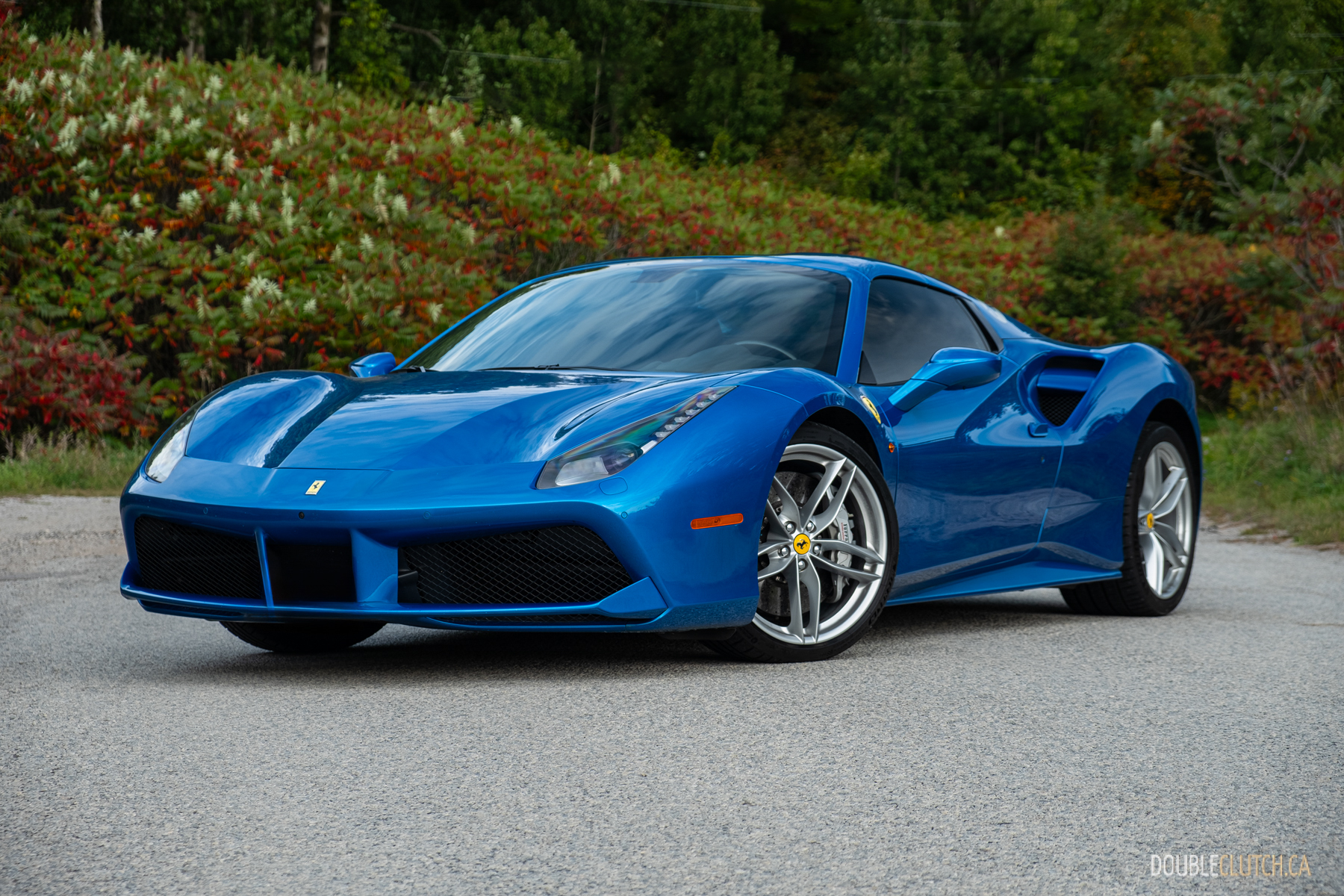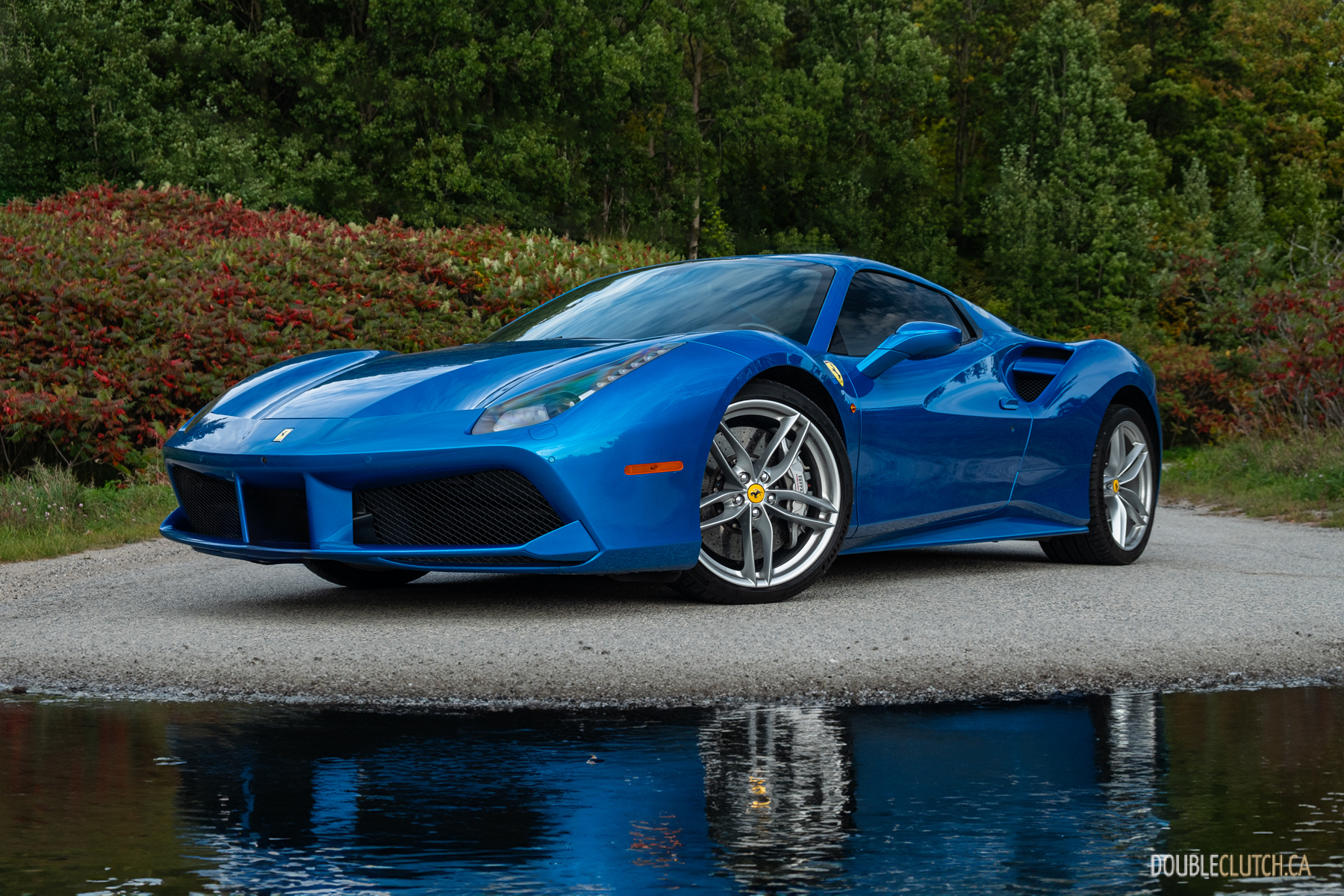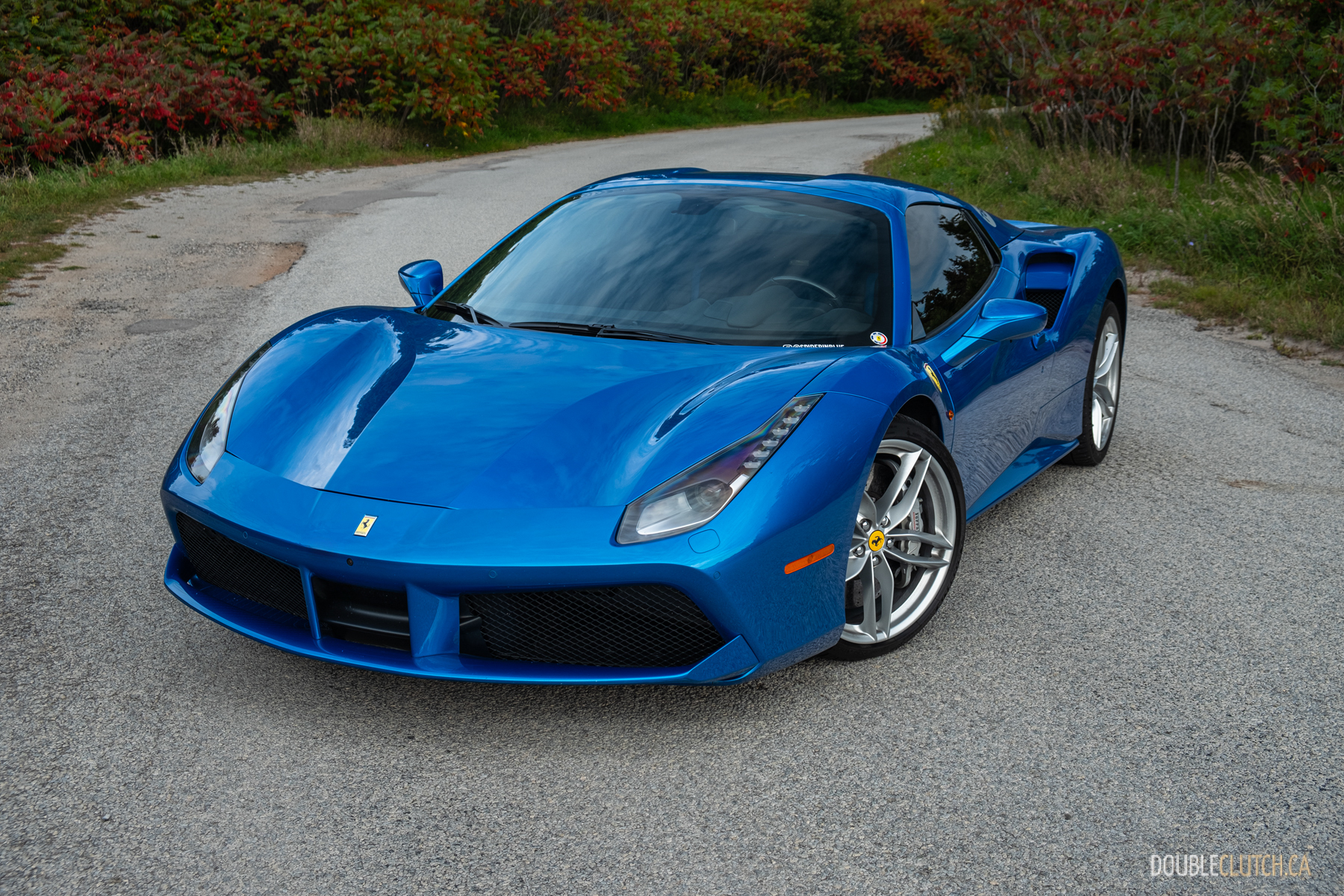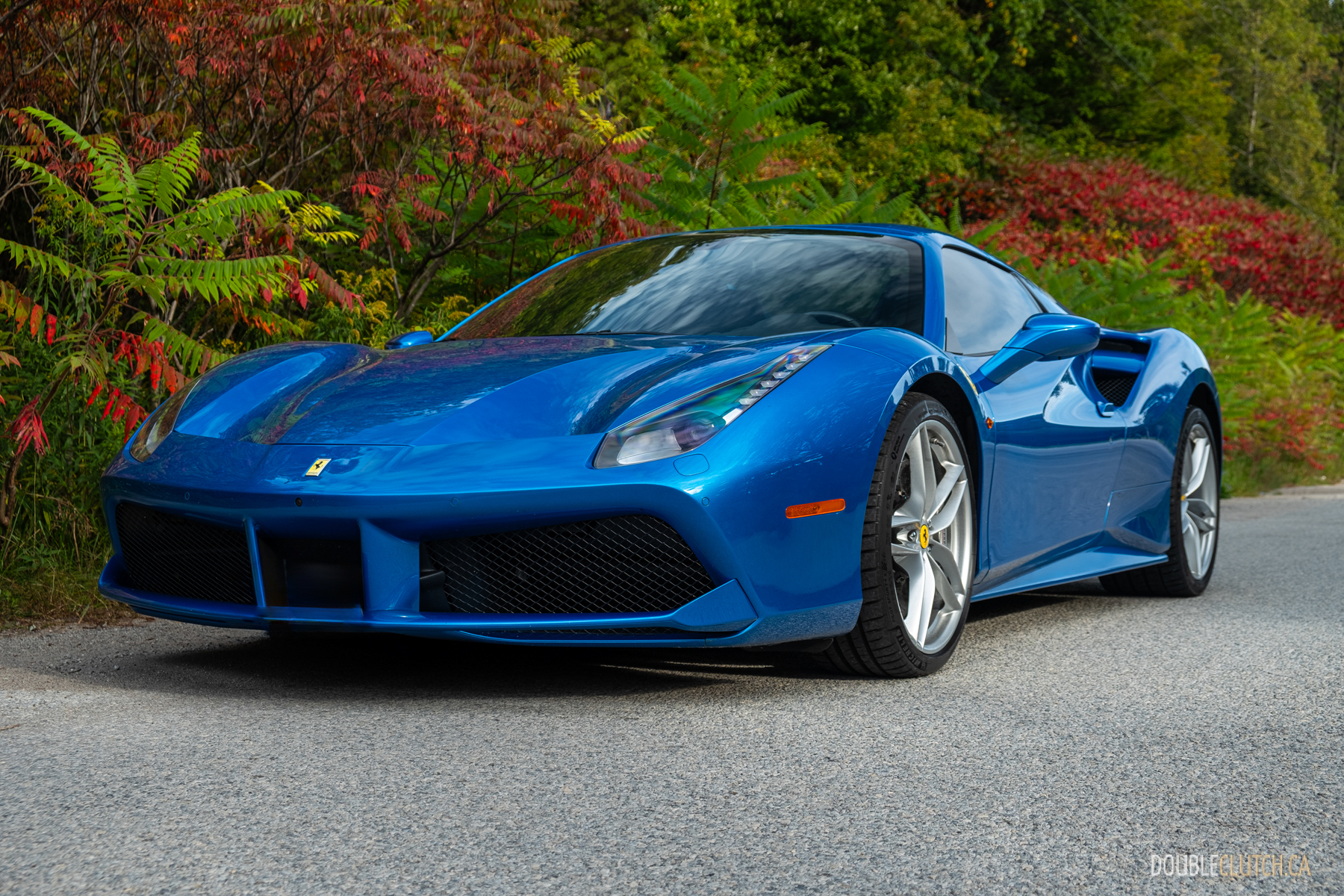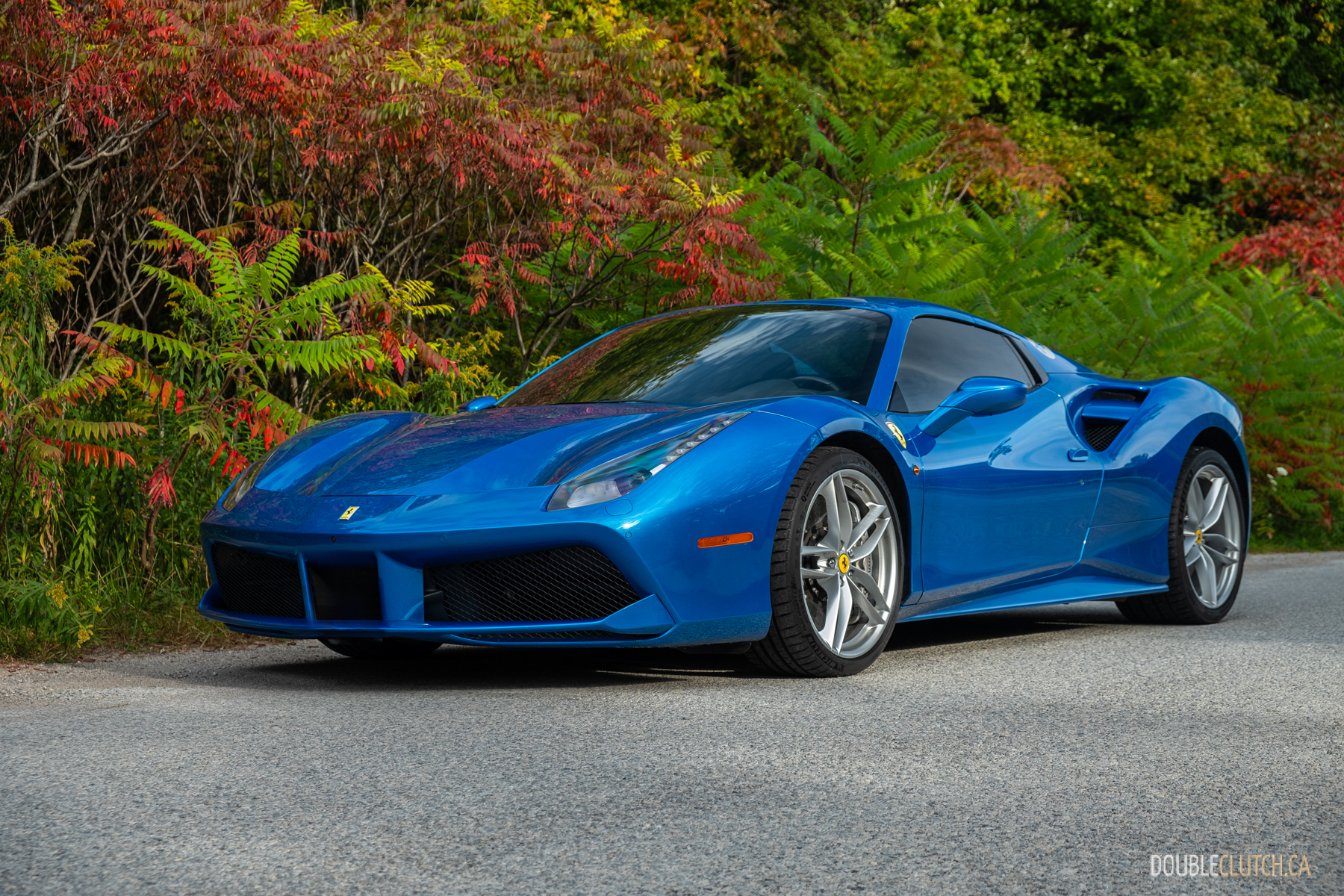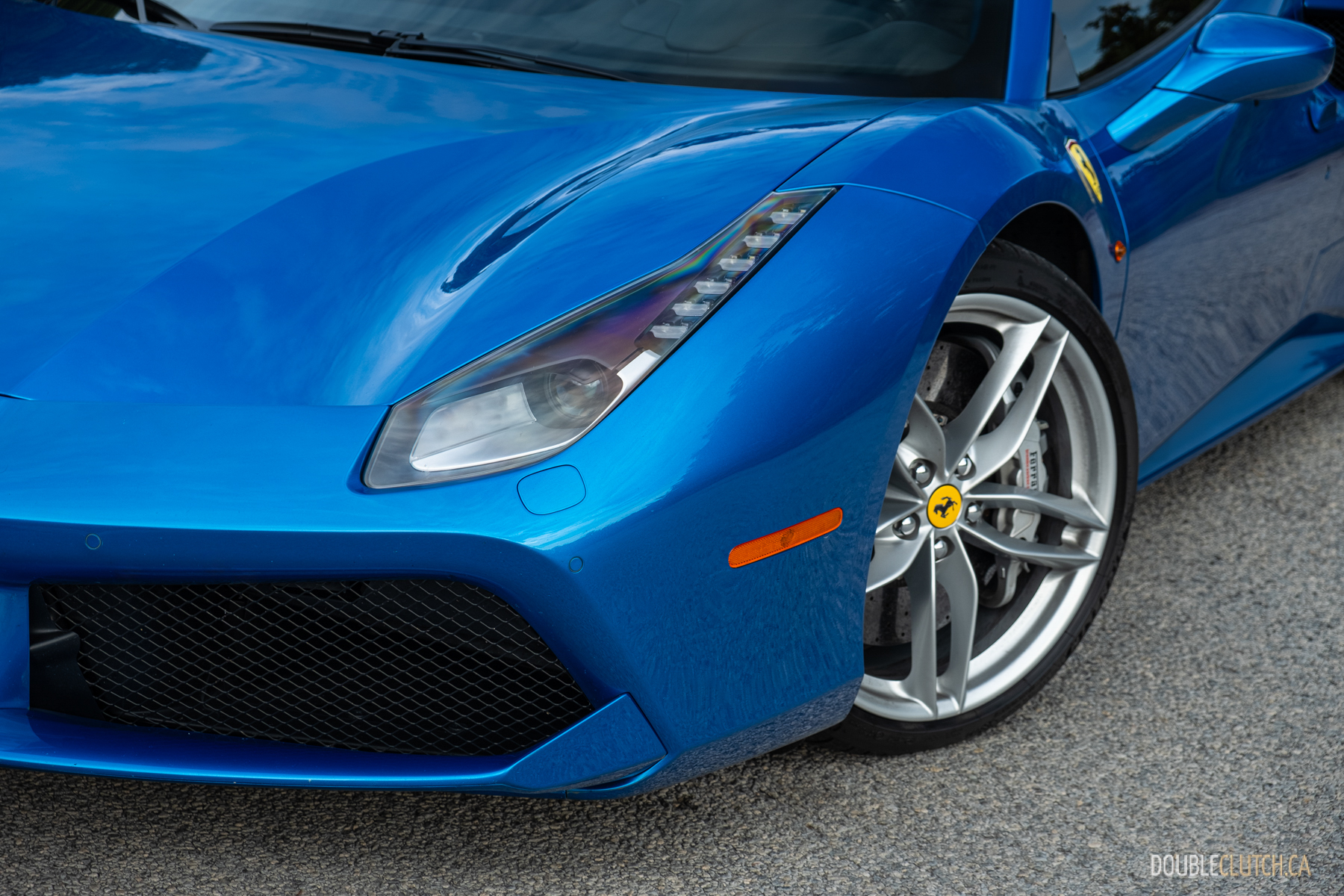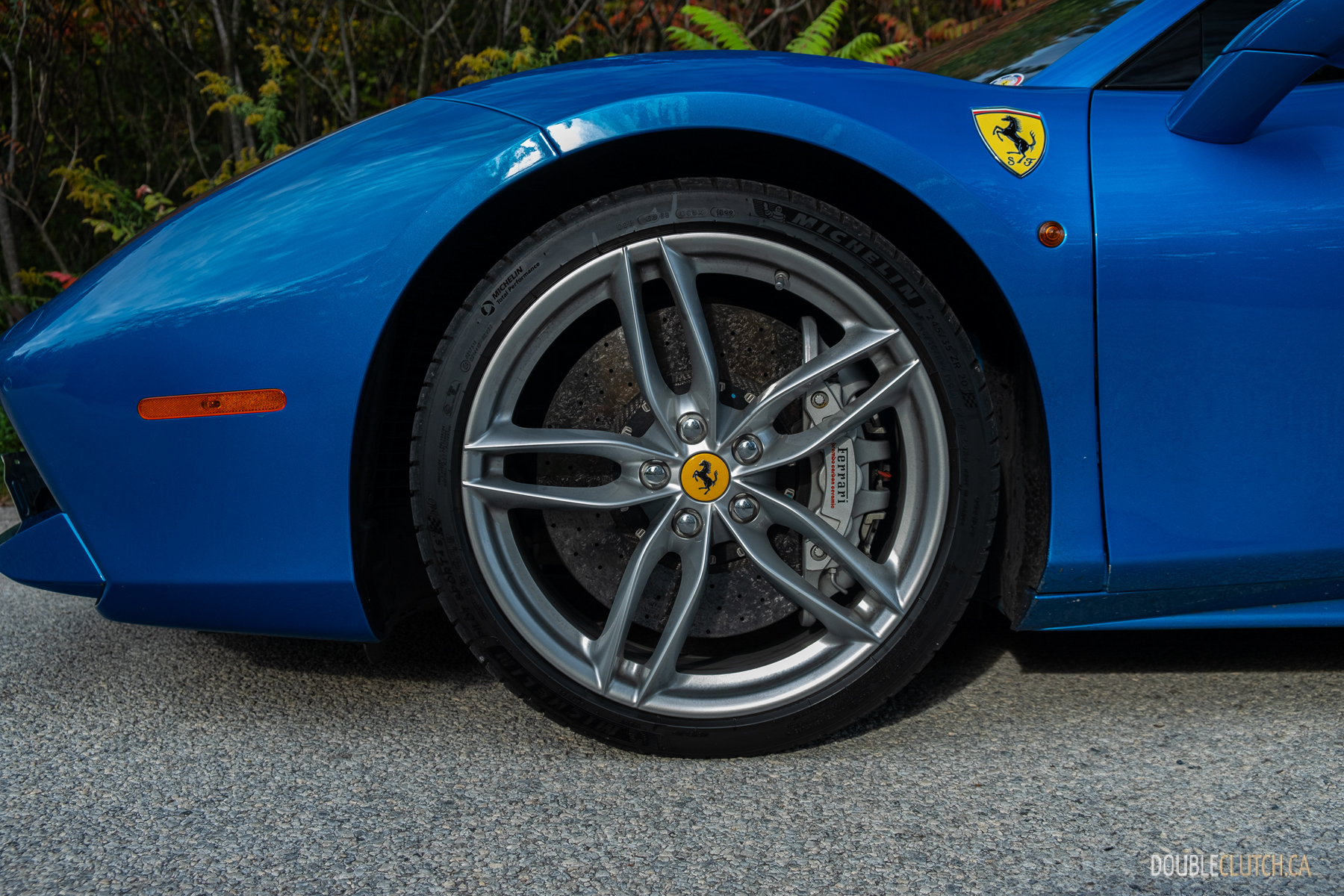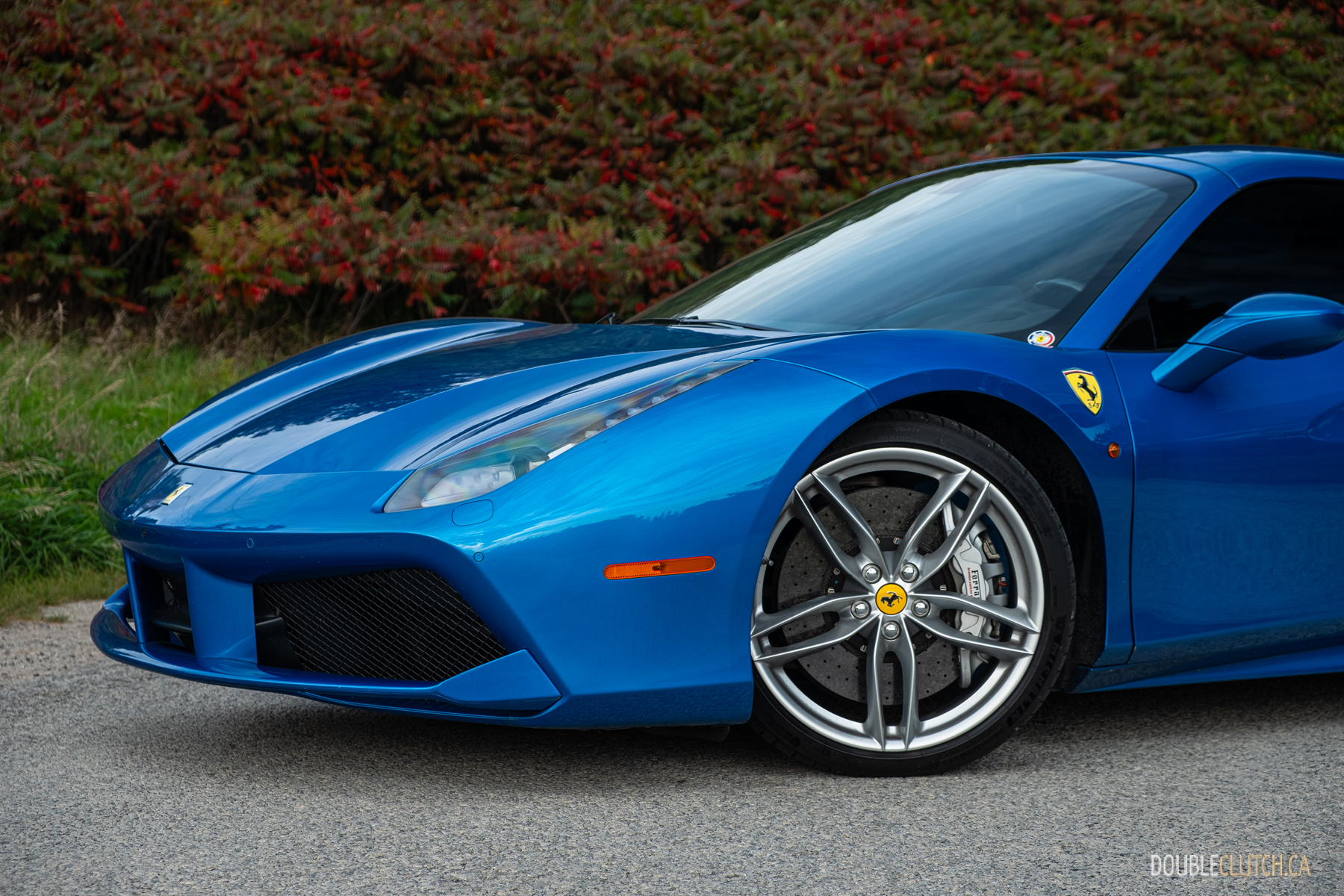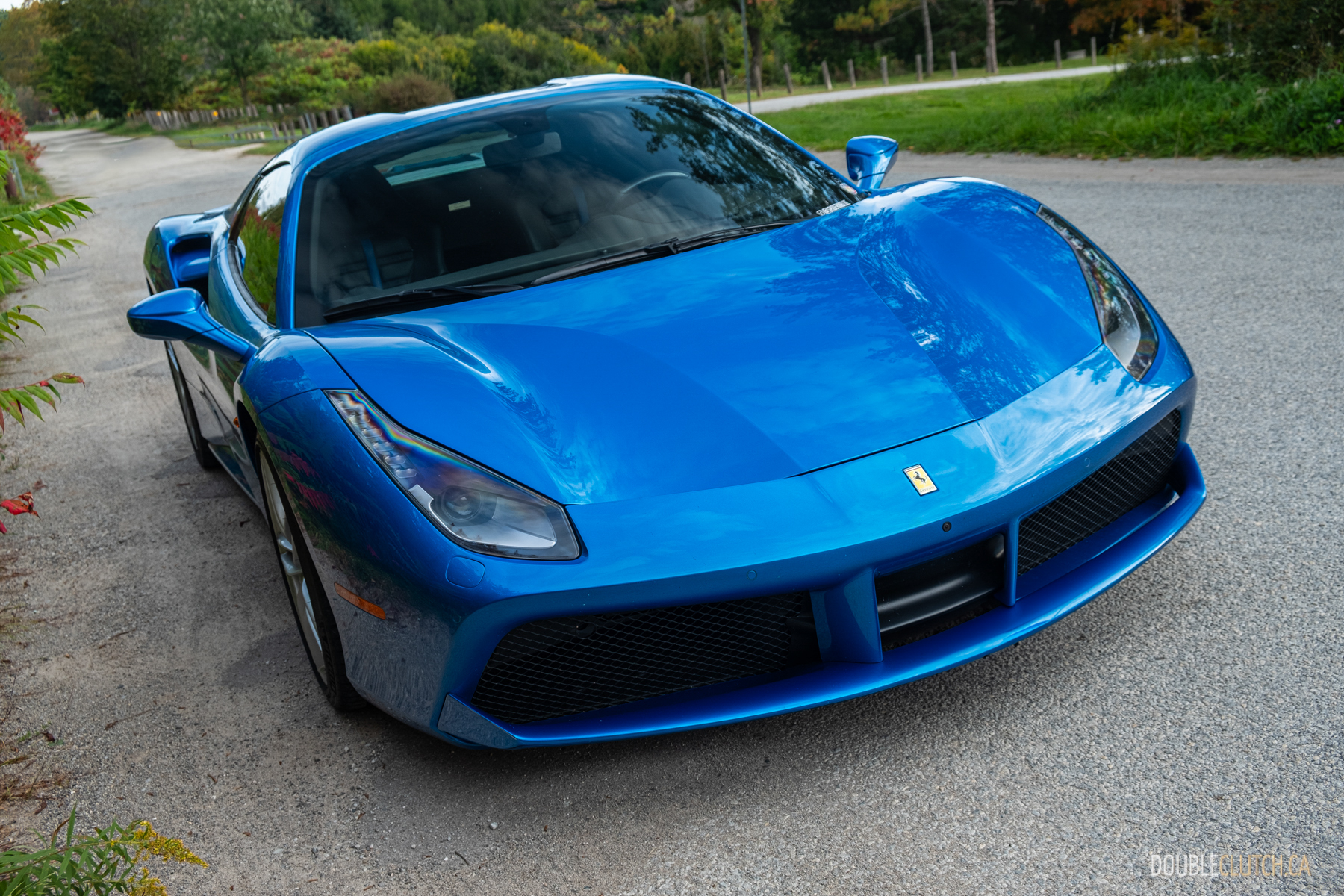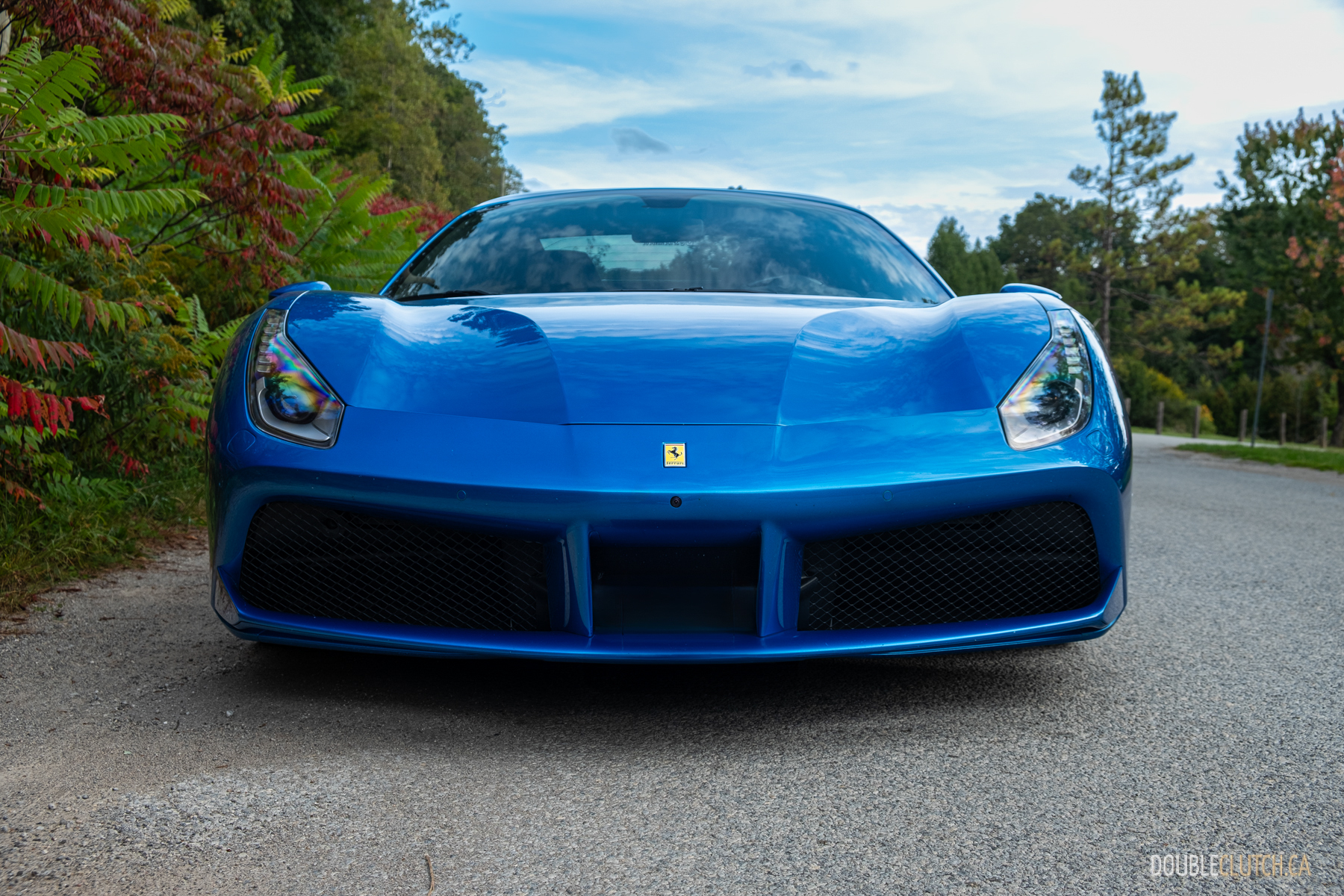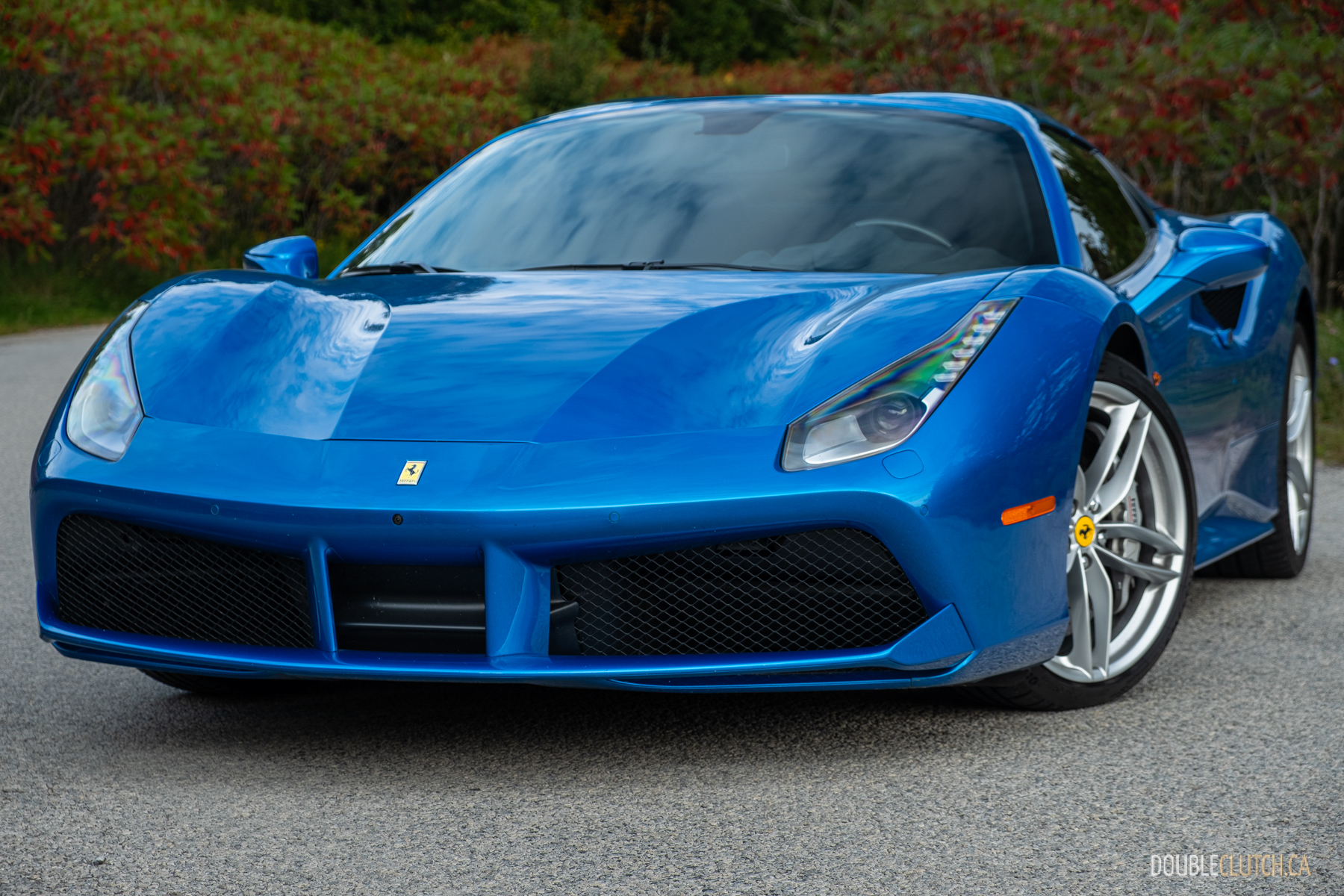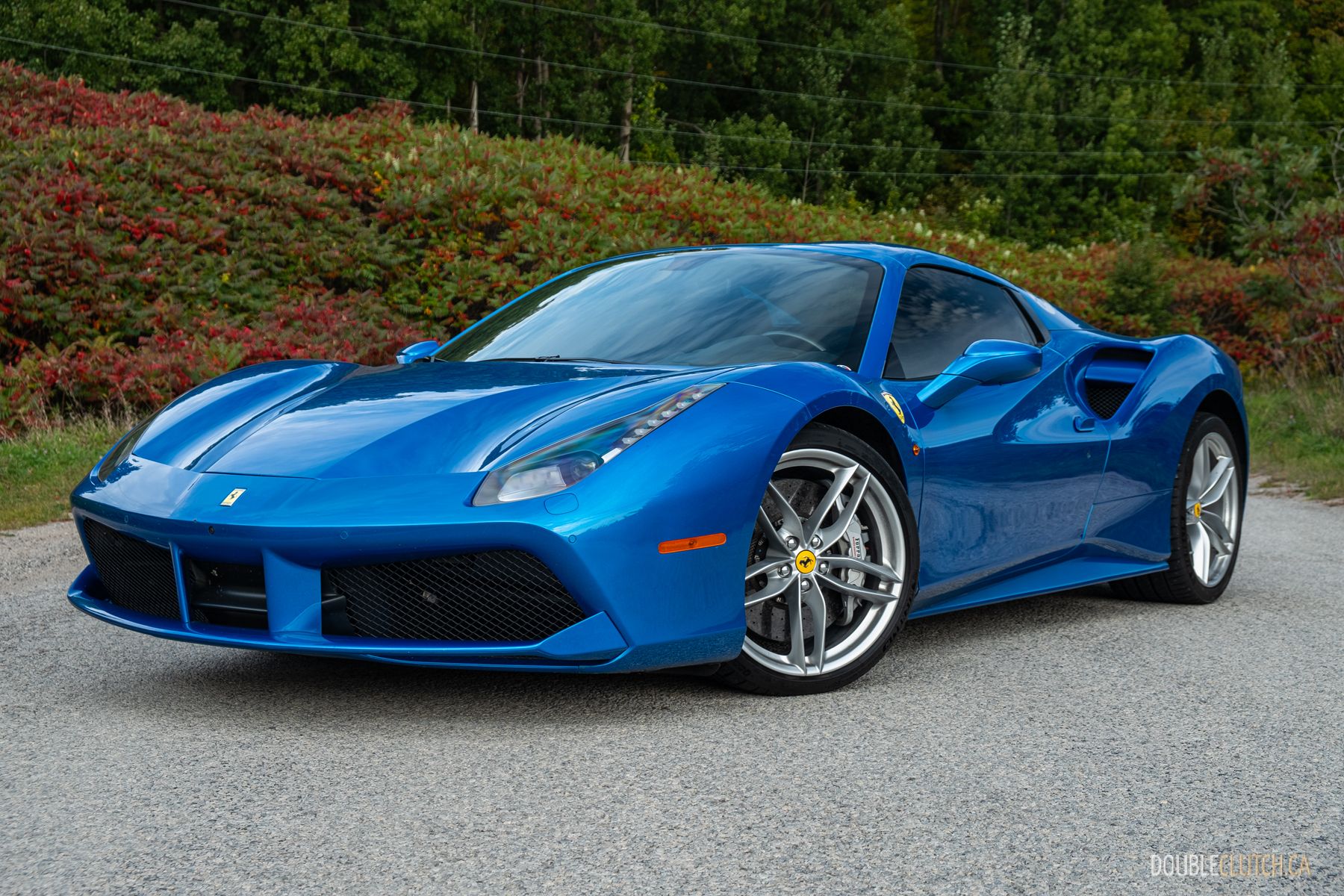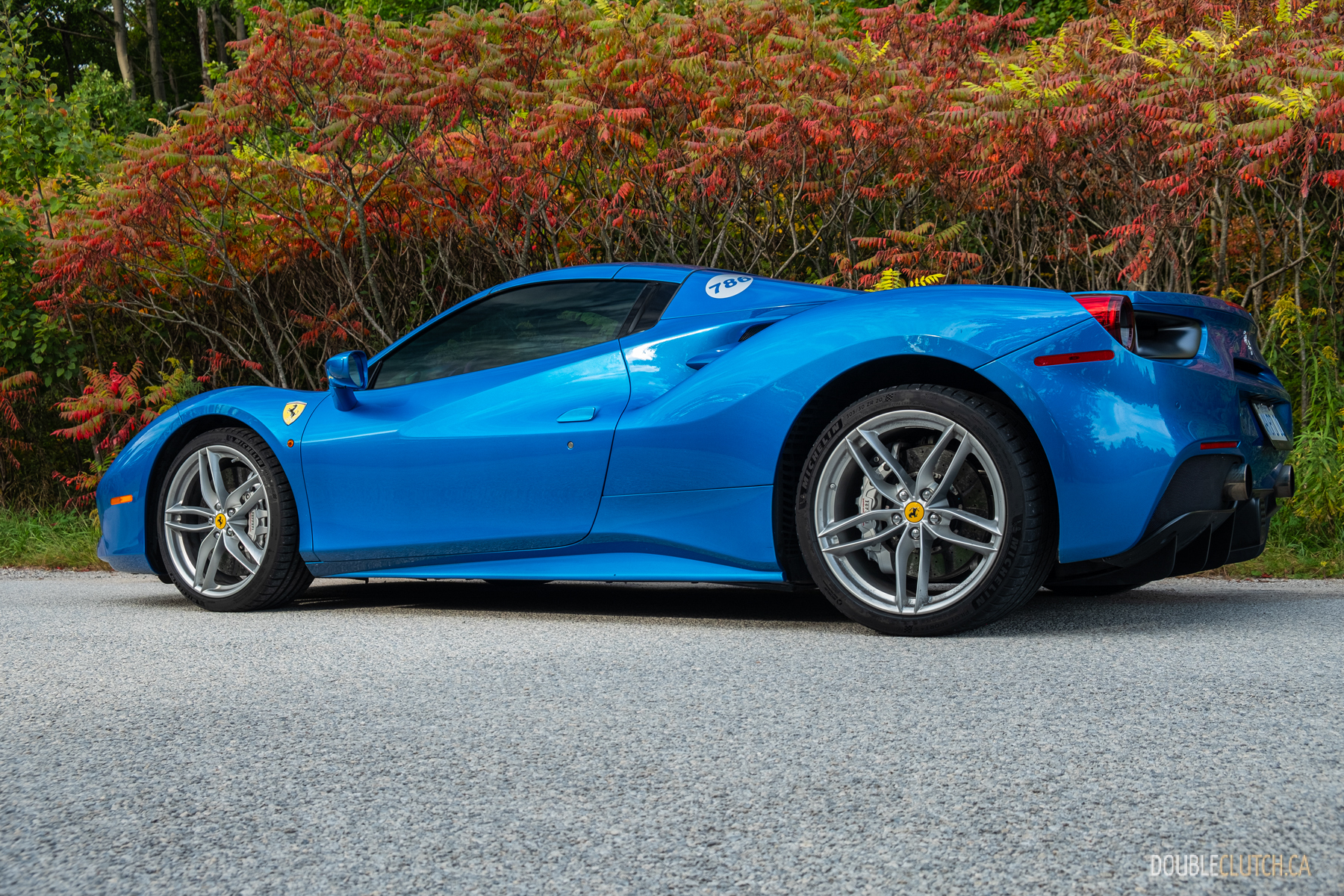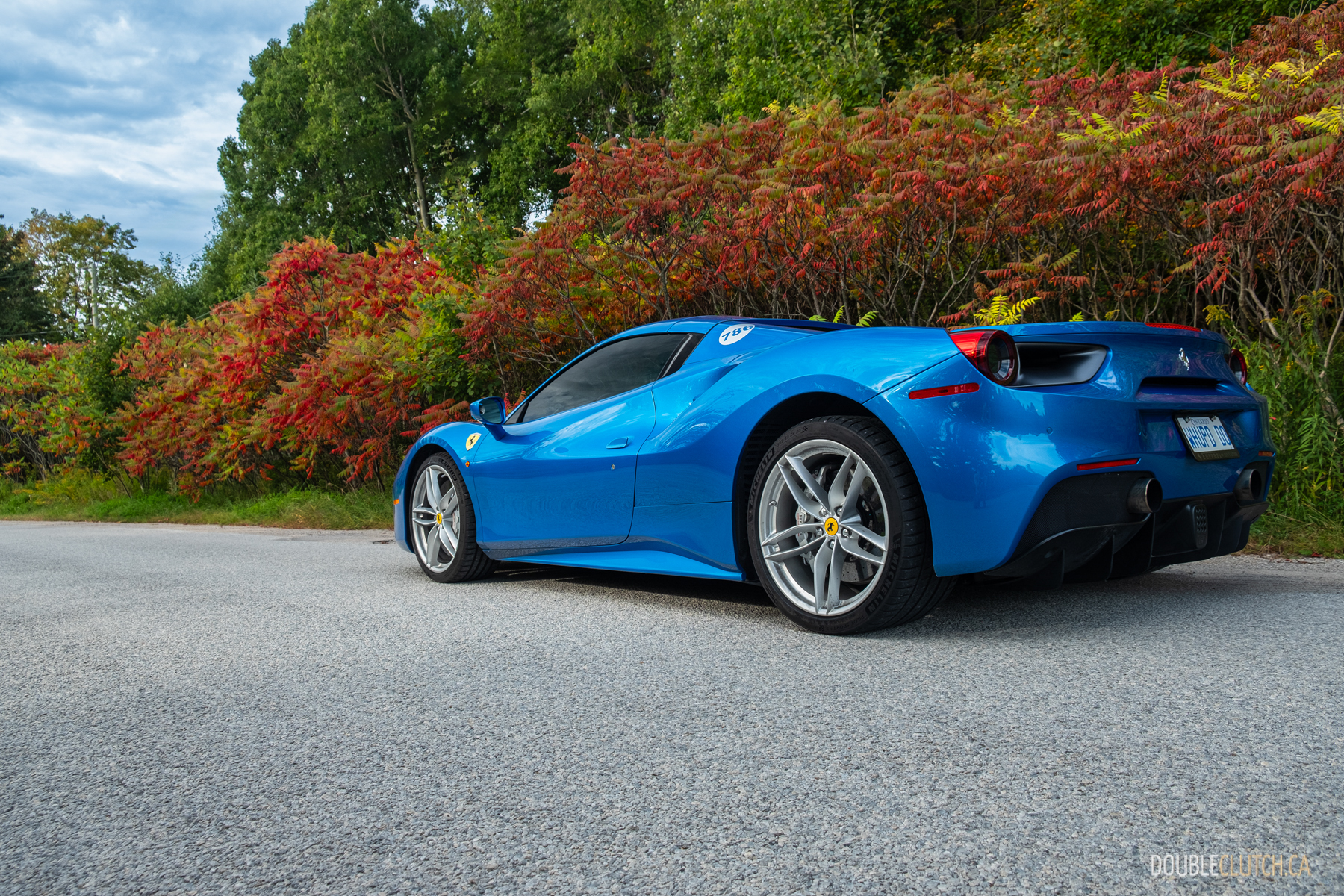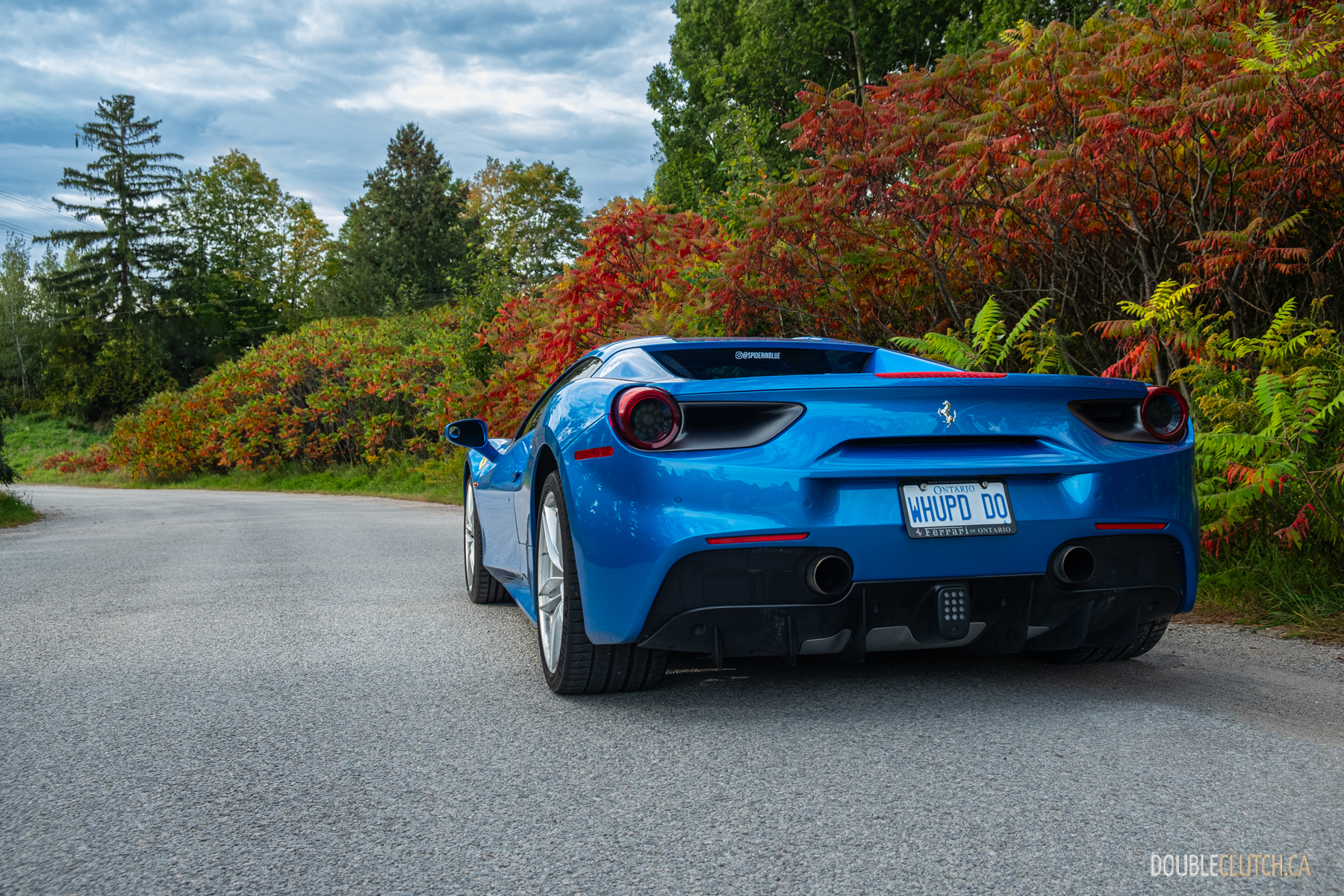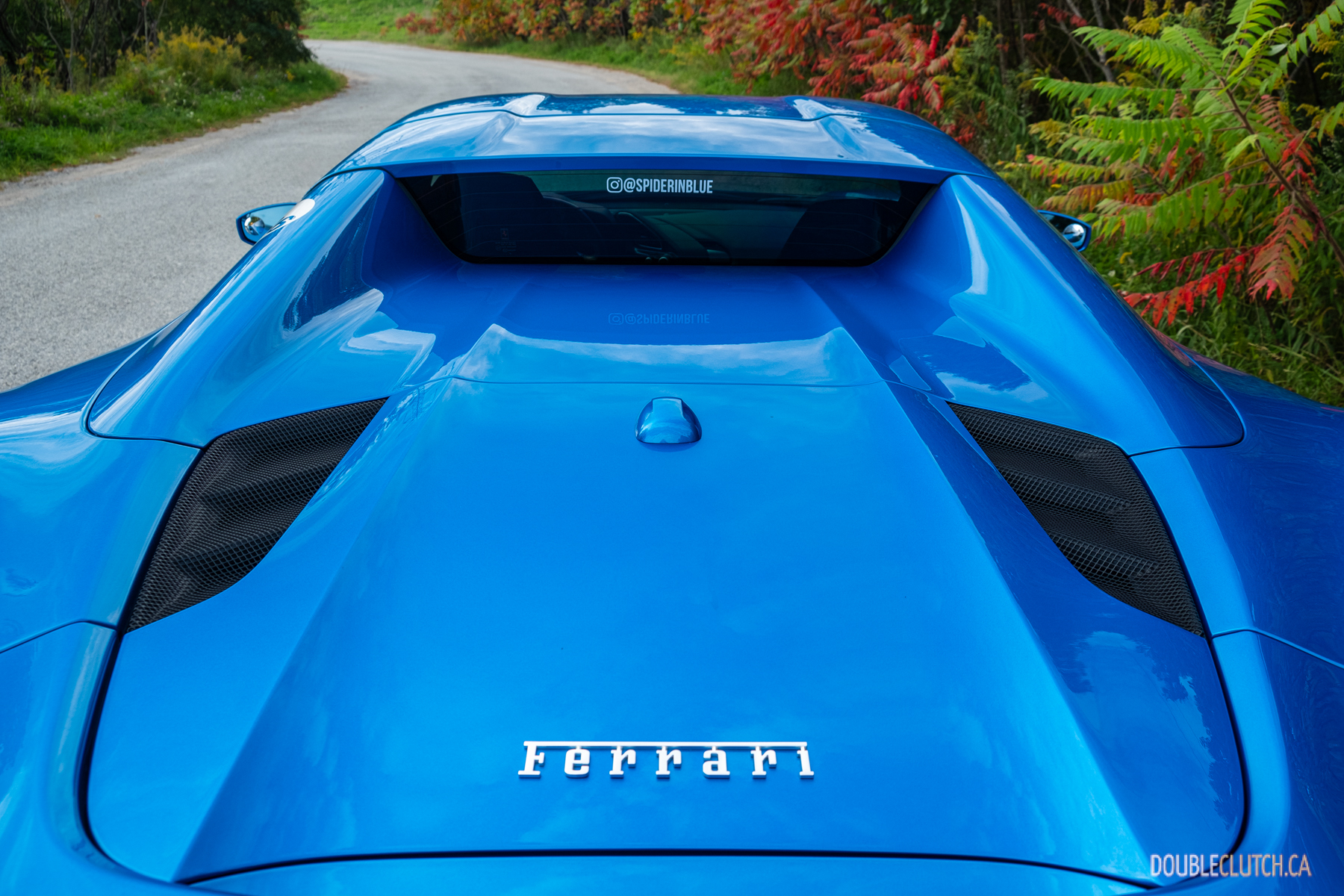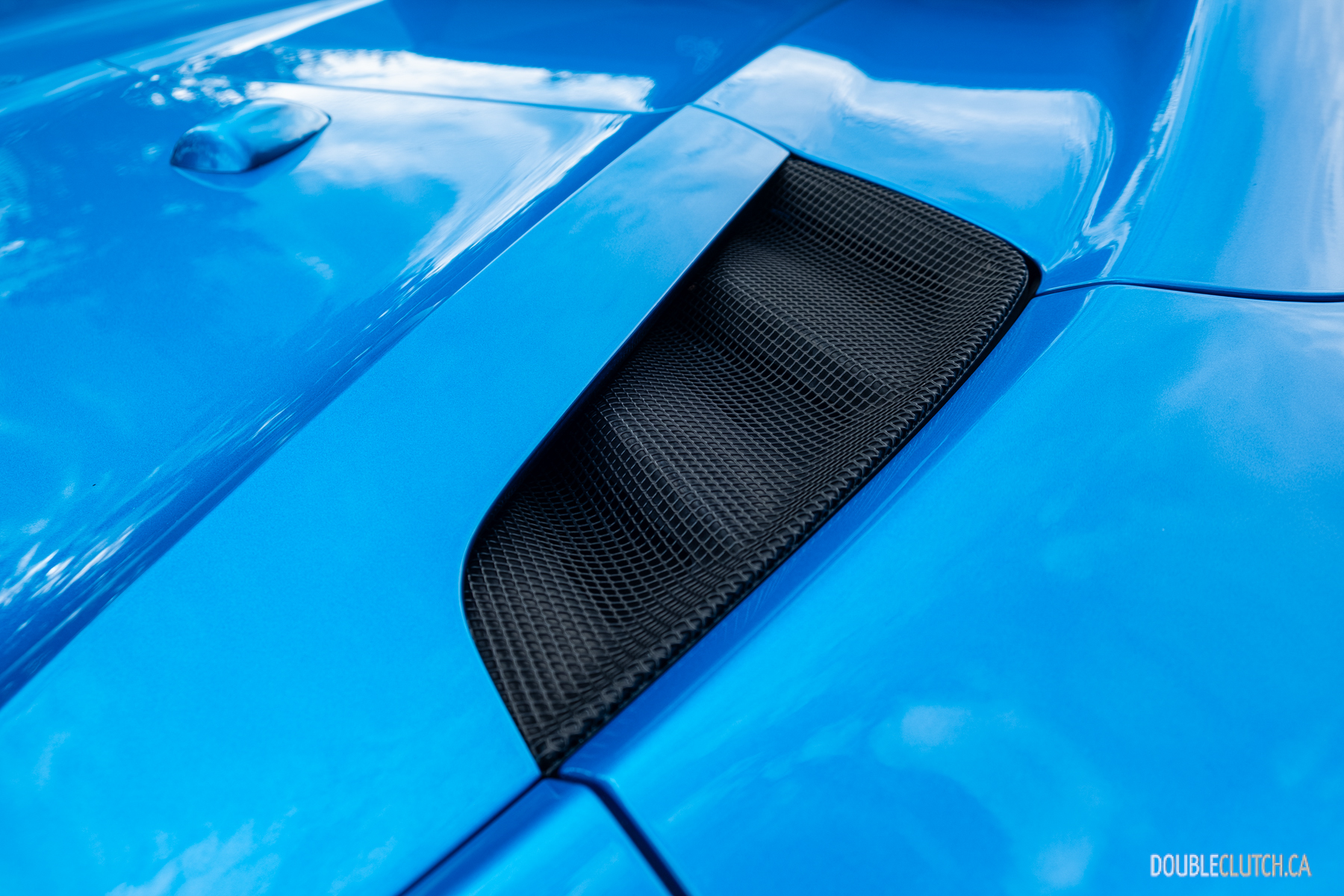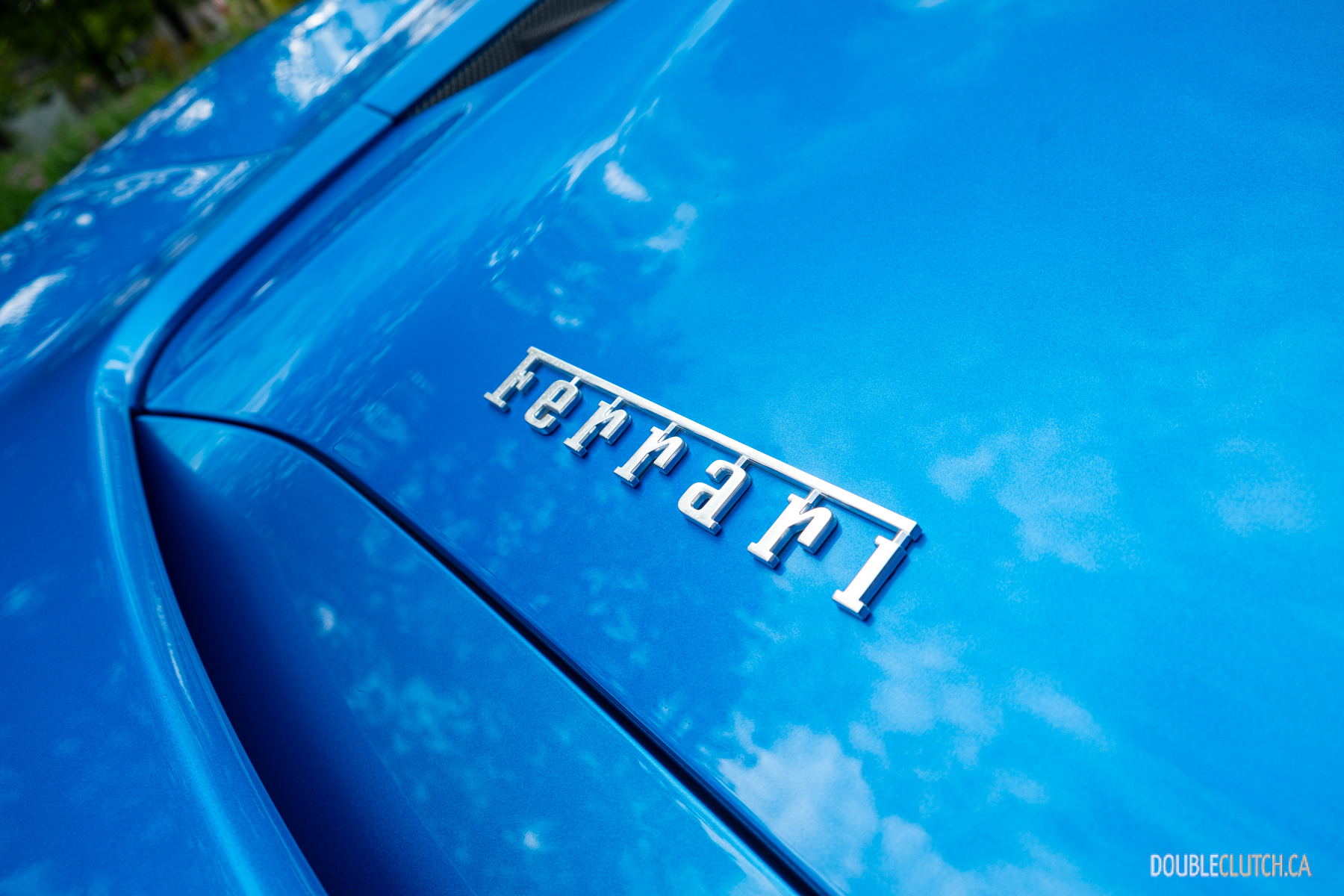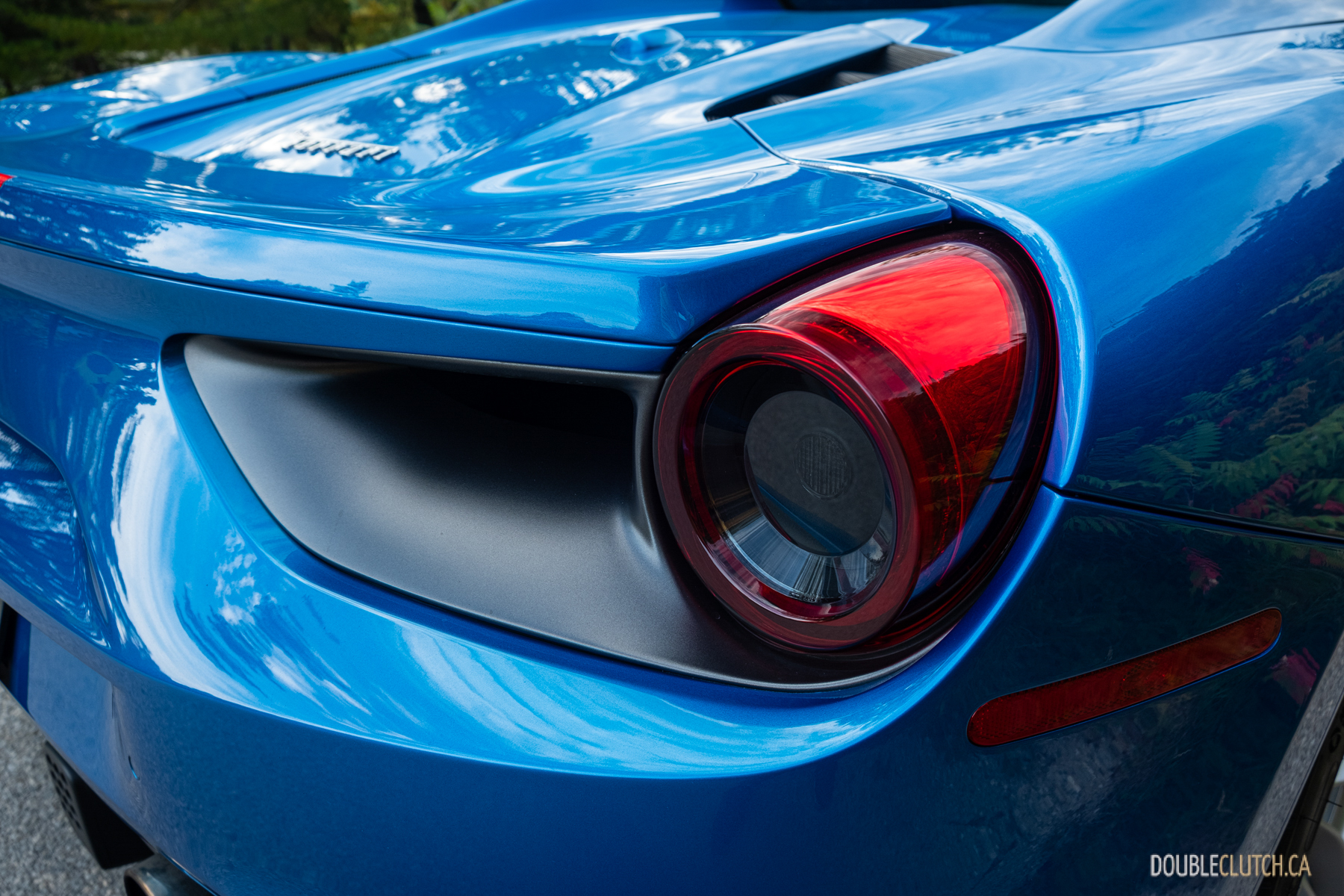Holy sh*t!
Pardon the language, but that’s all I could muster when I buried the gas pedal into the carpet of this 2016 Ferrari 488 Spider. I probably said the same thing when first seeing it as well.
I’ve driven a number of sports cars and a select few you could consider exotic, but none as modern or fierce as this 488 Spider. It’s not the first Ferrari I’ve driven, either: years ago, I had the opportunity to drive a 360 Spider — which is technically the 488’s spiritual predecessor — but it had just under 400 horsepower, and even less torque. You had to wring out that spectacular-sounding, normally aspirated V8 engine to really feel the power, and besides, I was in my 20s. I was too afraid to reach anywhere near its redline.
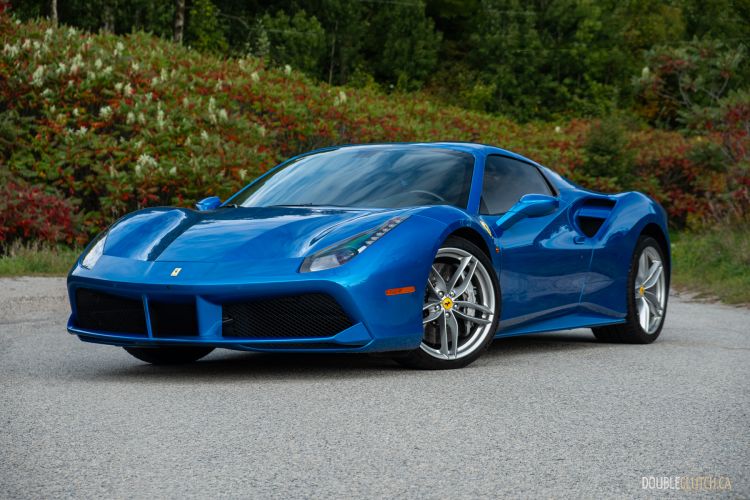
I’m older and supposedly wiser now, so in theory, I should be able to explore this 488 Spider’s much higher limits with a level of confidence I didn’t have in my 20s. It takes a lot of confidence to push a rear-wheel-drive Ferrari with damn near 700 horsepower on tap, yet this 488 makes you feel like a superhero. I don’t really consider myself a Ferrari fanboy per se, but I see it now. There’s magic bottled up in this Corsa Blue stallion.
It starts with the engine. The 488 gets Ferrari’s first turbocharged engine since the iconic F40. In the 488, the two parallel ball-bearing turbochargers force-feed air to the 3.9-litre V8 to deliver 670 hp at 8,000 rpm — yes, this is a turbocharged car with an astronomical redline — and a stout 560 lb-ft of torque at 3,000 rpm. This is about 100 more horspower and 160 more pound-feet of torque that swells 3,000 rpm sooner than its normally aspirated predecessor, the 458. Despite the twin turbochargers, there is an imperceptible level of turbo lag, feeling as close to naturally aspirated as any turbocharged car I’ve ever driven.
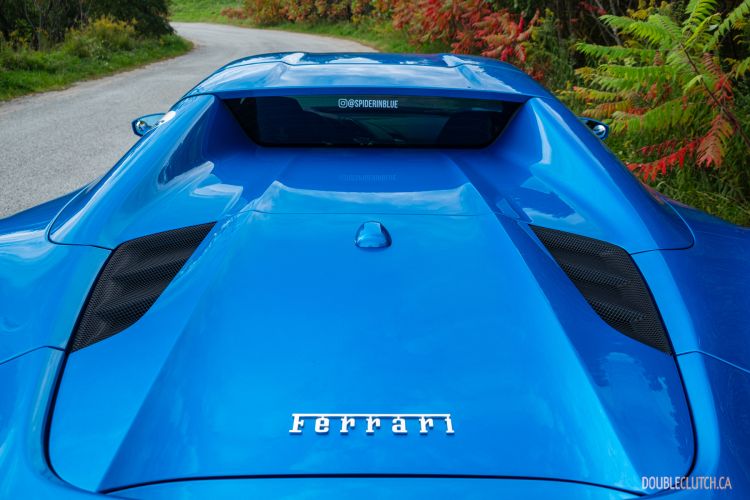
Many keyboard warriors lament that this is a turbocharged Ferrari, but I’m here to tell you that doesn’t ruin your lottery-dream-car. No, it doesn’t sound like your typical, screaming naturally aspirated V8 Ferrari of yore, but it has a robust soundtrack all on its own. The turbos hiss and suck right behind you, and the exhaust’s baritone notes are an occasion all on their own.
It’s a unique soundtrack, but it’s broken up by some strange exhaust valve logic where the valves stay closed under 2,500 rpm, then open immediately past that regardless of your throttle inputs. Puttering around town with the transmission in automatic mode, this isn’t an issue, as the 488 is keen to short-shift and keep the revs down. But in manual mode, as you crest that 2,500 RPM point, the valves keep opening and closing, therefore making the 488 seem bipolar as it goes from quiet to momentarily loud, and vice-versa.
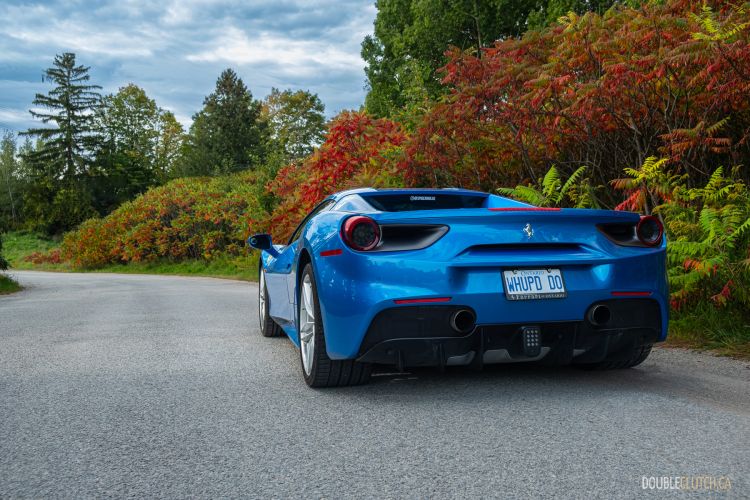
It’s even more apparent when you first fire up the 488. The valves open and then abruptly shut after about three seconds, very obviously neutering the drama of a cold start, but also managing to be slightly obnoxious. Blame different international noise regulations; luckily the owner of this particular 488 installed an aftermarket valve controller, so it’s easy enough to override that terrible logic. With a fully stock system, my neighbours would otherwise probably hate me.
The rest of this exotic is littered with proper logic, from the transmission to all the “prevent you from crashing” systems at play. The transmission is a seven-speed dual-clutch unit built by Getrag, and I love practically everything about it. Ferrari doesn’t give you a drive button; instead, you have to use the right paddle to shift into drive and get moving. The 488 also rolls back in gear, like a manual, and when you’re driving gingerly, you can feel the clutch slipping into first gear. If you’re paying close attention, you can even hear and feel the clutch disengage when you’re coming to a stop. You could call all of this unrefined, but with two manual transmission cars in my garage, it felt authentic and pure to me.
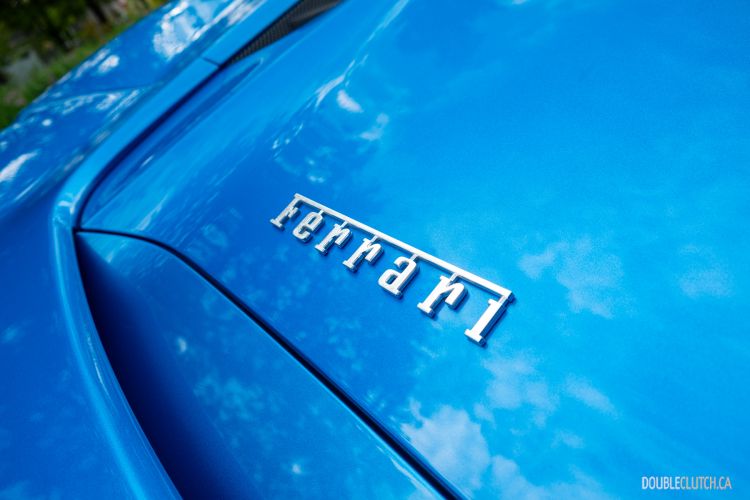
The shifts themselves are lightning quick, whether in automatic or manual mode, but what else do you expect from the automaker that made it OK for supercars to be automatic? I will grant Porsche’s PDK still feels more clinically perfect, but this Ferrari has more theatre to each shift. What I don’t like is the steering column-mounted shift paddles; they feel great in hand, but I’m one of those people who prefers them mounted on the steering wheel. I’m sure once I win the lottery, I’d get used to it after a few weeks. Besides, it didn’t stop me from shifting manually any chance I got, whether stomping on it or commuting.
And yes, you can commute without issue in a 488. The front end isn’t as low as you’d expect, easily clearing most speed bumps despite the lack of a front axle lift system. The ride quality is surprisingly good, especially when you press the magic button on the steering wheel that relaxes the magnetic dampers — yes, this Ferrari borrows tech from GM — and offers up a ride that would feel at home in an entry-level luxury sedan. Seriously, the 488 Spider in its most comfortable setting rides smoother than the Acura Integra Type S in its softest setting yet stays positively planted, no matter how hard I pushed it or how imperfect the road was.
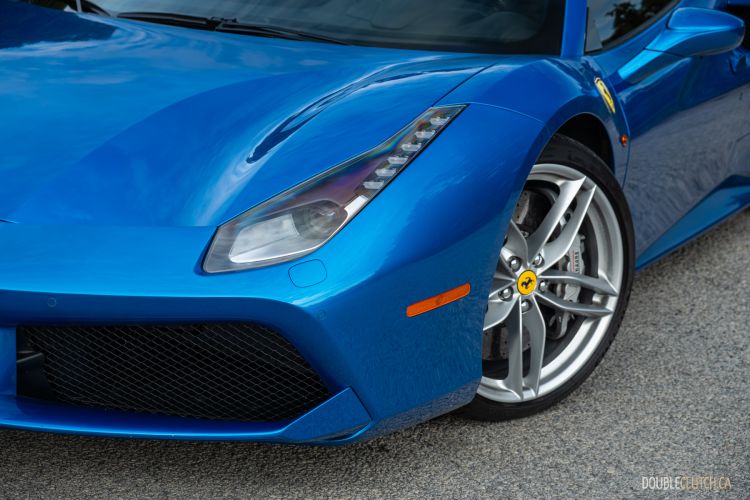
The suspension is no doubt aided by the superb chassis, putting 58.5 per cent of the 3,131-pound curb weight over the 305-section rear wheels; it gets 245s up front. Turn-in is crisp, reacting to your steering inputs almost instantly. Steering feel could be better, but the weighting is on point. The most shocking aspect about this 488 Spider is how accessible the performance is; it’s easy to drive this car fast and puts the power down with relative ease. Never did I feel like the rear end was going to escape me; this is why a mid-engine chassis is the way, but Ferrari’s so-called Manettino switch on the steering wheel, controlling the traction control, suspension, gearbox, and differentials deserves equal credit.
Newer Ferraris are littered with technology that keeps you going in the direction you want. This includes E-DIFF3, F1-TRAC, FRS SCM-E, and SSC. Those are a lot of letters and acronyms; I won’t get into what each one means, but will tell you that they work mostly behind the scenes to make you feel like an expert driver. Of course, with the Manettino switch, you can turn much of this on or off to your heart’s content; I kept the car in sport mode most often, which is one of the tamer settings. As long as you don’t floor it from the get-go, this 488 feels as sure-footed as they come, despite having a ferocious immediacy to the power.
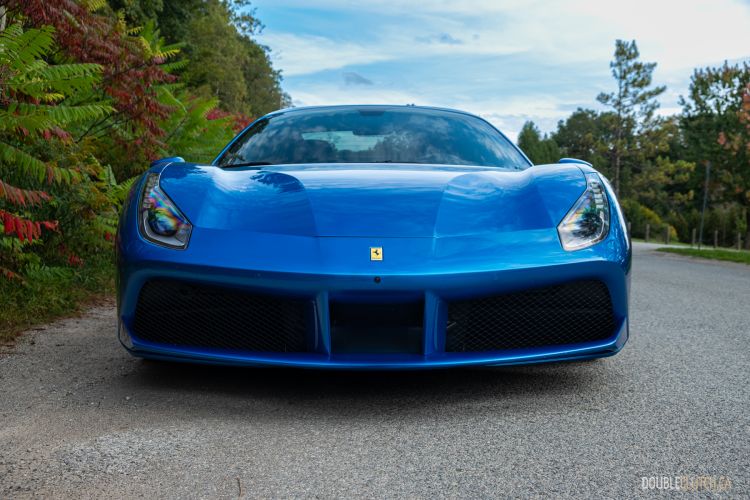
Hot take: I’ve always thought a Ferrari should be a convertible. The 488 Spider fits the bill; with the top up, you’d never guess you could go topless — the car, not you. It looks as coupe-like as can be, but with the touch of a button the roof mechanism begins its mechanical dance, tucking away completely in just 14 seconds. You can raise or lower the roof at up to 50 km/h, and once the top is stowed, the 488 Spider looks substantially better. Much of this appeal has to do with the long buttresses, tapering down from the roll hoops just behind the rear seats. It’s a downright seductive silhouette. The rear end is relatively clean with simple but timeless round tail lights, twin exhaust tips, and a giant — and functional — rear diffusor that steals the show. Up front, it’s very 458, albeit with a minor facelift to the lower section of the front bumper. The side profile is just as sultry as the rest of the car, with gaping air intakes feeding those hungry turbos.
Ferrari interiors are generally nothing to write home about, but they’ve come a long way from the spartan, low-quality builds of the past. [Yeah, the 550 Maranello especially. Totally rental-spec. —Ed.] It’s still quite simple overall, fitting for a car focused on driving, but all materials are top notch, the seats are surprisingly comfortable and keep you in place, and the leather-and-carbon-fibre steering wheel looks and feel great in hand — not to mention those sequential shift lights are oh-so-cool.
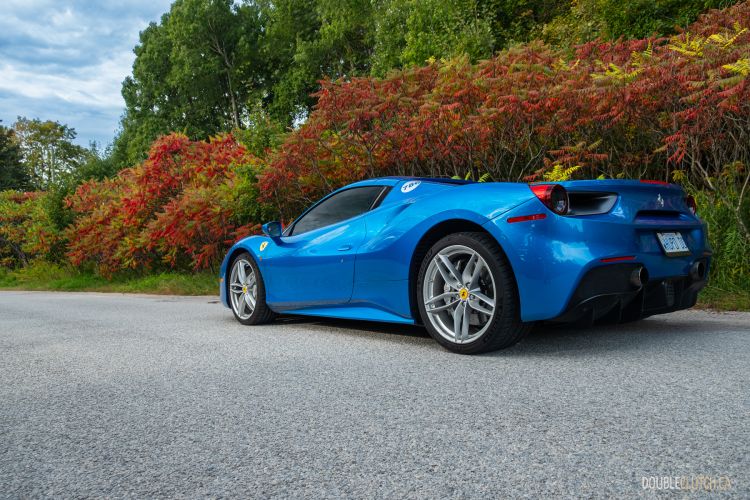
It does fall apart in two areas. First, is the climate control unit; the buttons and knobs work well, but the whole unit looks like it belongs in a Fiat. Second, the displays flanking the beautiful centre-mounted tachometer; they display a myriad of information, but are clunky to use and sometimes unresponsive. The JBL audio system is also middling at best, but does that really matter when the real sound system is right behind you?
This 2016 Ferrari 488 Spider is everything you’d expect something with a prancing horse to be — except it isn’t red, but that’s a good thing in my books. It’s beautiful, incredibly quick yet wholly accessible, and still sounds great. I wouldn’t lament the fact that it’s turbocharged; so is the F40, arguably the most iconic Ferrari of all time. The 488 is truly an experience for all your senses, turbochargers and all, and as a convertible, smiles-per-gallon are sky-high.
See Also
The 2024 Lexus LC 500 Convertible is better than coffee

